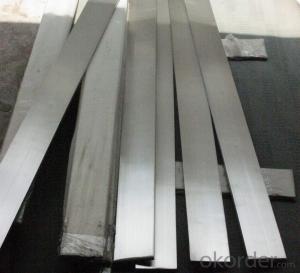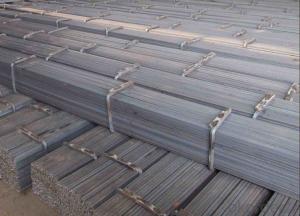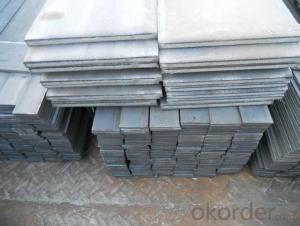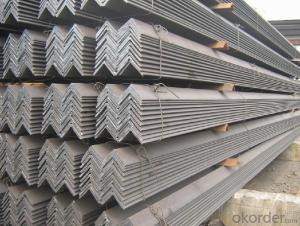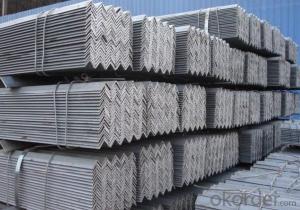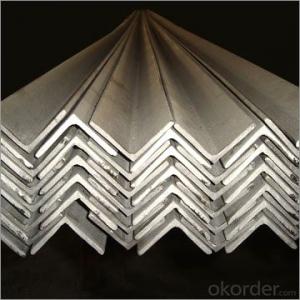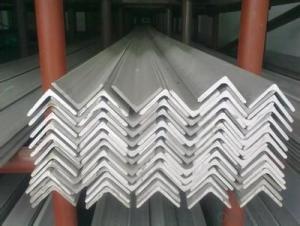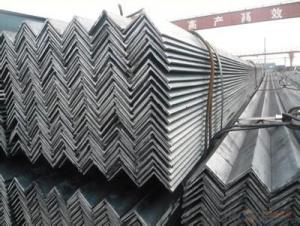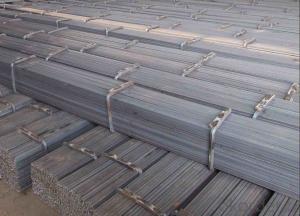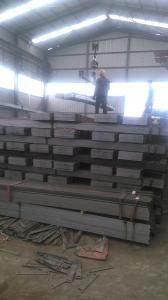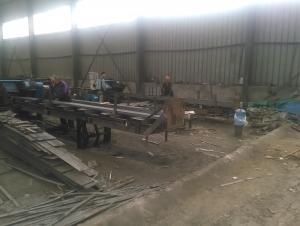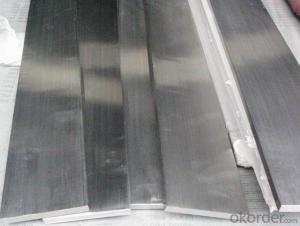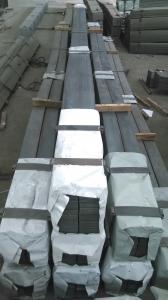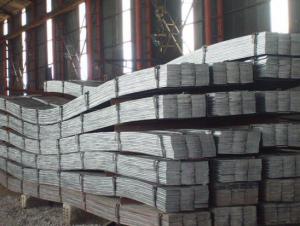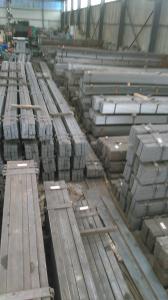Angle Steel Hot Rolled High Quality 25-250MM GB Q235
- Loading Port:
- Shanghai
- Payment Terms:
- TT or LC
- Min Order Qty:
- 25 m.t.
- Supply Capability:
- 200000 m.t./month
OKorder Service Pledge
OKorder Financial Service
You Might Also Like
Product Description:
OKorder is offering Angle Steel Hot Rolled High Quality 25-250MM GB Q235 at great prices with worldwide shipping. Our supplier is a world-class manufacturer of steel, with our products utilized the world over. OKorder annually supplies products to European, North American and Asian markets. We provide quotations within 24 hours of receiving an inquiry and guarantee competitive prices.
Product Applications:
According to the needs of different structures, Angle can compose to different force support component, and also can be the connections between components. It is widely used in various building structures and engineering structures such as roof beams, bridges, transmission towers, hoisting machinery and transport machinery, ships, industrial furnaces, reaction tower, container frame and warehouse etc
Product Advantages:
OKorder's Angle Steel Hot Rolled High Quality 25-250MM GB Q235 are durable, strong, and resist corrosion.
Main Product Features:
· Premium quality
· Prompt delivery & seaworthy packing (30 days after receiving deposit)
· Corrosion resistance
· Can be recycled and reused
· Mill test certification
· Professional Service
· Competitive pricing
Product Specifications:
Manufacture: Hot rolled
Grade: Q195 – 235
Certificates: ISO, SGS, BV, CIQ
Length: 6m – 12m, as per customer request
Packaging: Export packing, nude packing, bundled
Sizes: 25mm-250mm | ||||||||||||
a*t | ||||||||||||
25*2.5-4.0 | 70*6.0-9.0 | 130*9.0-15 | ||||||||||
30*2.5-6.6 | 75*6.0-9.0 | 140*10-14 | ||||||||||
36*3.0-5.0 | 80*5.0-10 | 150*10-20 | ||||||||||
38*2.3-6.0 | 90*7.0-10 | 160*10-16 | ||||||||||
40*3.0-5.0 | 100*6.0-12 | 175*12-15 | ||||||||||
45*4.0-6.0 | 110*8.0-10 | 180*12-18 | ||||||||||
50*4.0-6.0 | 120*6.0-15 | 200*14-25 | ||||||||||
60*4.0-8.0 | 125*8.0-14 | 250*25 | ||||||||||
FAQ:
Q1: Why buy Materials & Equipment from OKorder.com?
A1: All products offered byOKorder.com are carefully selected from China's most reliable manufacturing enterprises. Through its ISO certifications, OKorder.com adheres to the highest standards and a commitment to supply chain safety and customer satisfaction.
Q2: How do we guarantee the quality of our products?
A2: We have established an advanced quality management system which conducts strict quality tests at every step, from raw materials to the final product. At the same time, we provide extensive follow-up service assurances as required.
Q3: How soon can we receive the product after purchase?
A3: Within three days of placing an order, we will begin production. The specific shipping date is dependent upon international and government factors, but is typically 7 to 10 workdays.
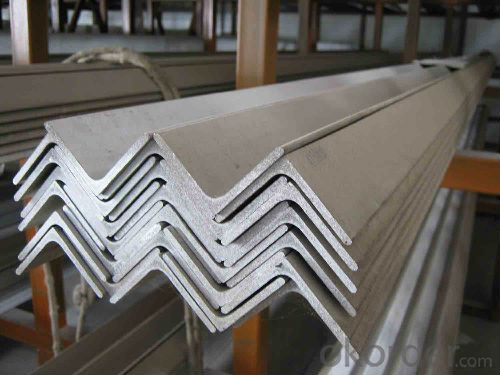
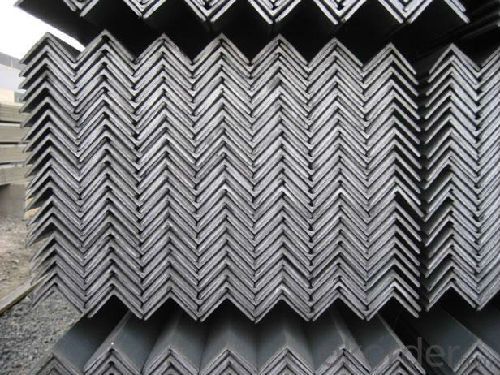
- Q: What are the different surface finishes for steel flat bars?
- There are several different surface finishes available for steel flat bars, each with its own unique properties and benefits. Some of the most common surface finishes for steel flat bars include: 1. Hot Rolled: This is the most basic surface finish, where the steel is heated and then rolled through a series of rollers to achieve the desired shape. This finish is characterized by a rough and textured surface, with visible mill scale. It is often used for structural applications where appearance is not a primary concern. 2. Cold Rolled: In this process, the steel is rolled at room temperature, resulting in a smoother and more precise finish. Cold rolled steel flat bars have a clean and smooth surface, making them suitable for applications where aesthetics are important, such as furniture or decorative pieces. 3. Galvanized: Galvanizing is a process in which the steel flat bars are coated with a layer of zinc to protect them from corrosion. This finish provides excellent corrosion resistance and durability, making it ideal for outdoor applications or in environments with high moisture or chemical exposure. 4. Polished: Steel flat bars can also be polished to achieve a shiny and reflective surface. This finish is often used in architectural or decorative applications, where a sleek and modern appearance is desired. Polished steel flat bars can be further treated with coatings or protective films to enhance their durability and resistance to scratches or stains. 5. Brushed: Brushing is a surface treatment that creates a pattern of fine lines on the steel surface, giving it a textured and matte appearance. This finish is commonly used in applications where a decorative yet non-reflective surface is desired, such as signage or interior design. It is important to consider the specific requirements and intended use of the steel flat bars when selecting the appropriate surface finish. Each finish offers different aesthetic qualities, corrosion resistance, durability, and ease of maintenance, allowing for a wide range of options to suit various applications.
- Q: Can steel flat bars be used for creating supports or brackets?
- Yes, steel flat bars can be used for creating supports or brackets. Steel flat bars are commonly used for their strength and durability, making them ideal for supporting heavy loads or providing structural stability. They can be easily shaped or welded to create custom brackets or supports for various applications, such as shelves, furniture, machinery, or construction projects. Steel flat bars are available in different sizes and thicknesses, allowing for versatility in design and application.
- Q: What is the maximum thickness available for steel flat bars?
- The maximum thickness available for steel flat bars can vary depending on the specific manufacturer and supplier. However, typically, steel flat bars can be found in thicknesses ranging from 1/8 inch to 1 inch or more.
- Q: What are the different grades of steel used for flat bars?
- There are several grades of steel used for flat bars, including low carbon steel (1018, A36), medium carbon steel (1045), high carbon steel (1095), alloy steel (4140), and stainless steel (304, 316). The choice of grade depends on the specific application and desired properties such as strength, durability, and corrosion resistance.
- Q: What is the typical yield strength of steel flat bars?
- The yield strength of steel flat bars can differ depending on the grade of steel employed. Nevertheless, the yield strength generally falls within the range of 30,000 to 80,000 pounds per square inch (psi) for most commonly used grades of steel. It is worth mentioning that factors like composition, heat treatment, and manufacturing process can affect the yield strength of the steel. Hence, it is advisable to refer to the material specifications or get in touch with the manufacturer for precise information regarding the yield strength of steel flat bars.
- Q: Are steel flat bars easy to work with?
- Steel flat bars are widely recognized as being easy to work with. They possess versatility and can be effortlessly cut, drilled, welded, and shaped to suit different uses. With their consistent shape and availability in various thicknesses, widths, and lengths, steel flat bars are appropriate for a broad array of projects. Furthermore, their commendable strength and durability have made them highly favored in construction, manufacturing, and do-it-yourself endeavors. Nevertheless, it is crucial to acknowledge that handling steel flat bars may necessitate specific tools and expertise, and safety precautions should be implemented.
- Q: What are the different techniques for joining steel flat bars together?
- There are several techniques for joining steel flat bars together, depending on the specific requirements and applications. Some of the common techniques include welding, bolting, riveting, and adhesive bonding. 1. Welding: Welding is one of the most widely used techniques for joining steel flat bars. It involves melting the edges of the flat bars and fusing them together using heat. Different welding methods, such as arc welding, gas welding, and laser welding, can be used depending on the thickness and composition of the steel bars. 2. Bolting: Bolting is an effective technique for joining steel flat bars, especially when disassembly is required. It involves drilling holes in the flat bars and using bolts, nuts, and washers to secure them together. Bolting provides a strong and reliable connection but may require periodic maintenance to prevent loosening. 3. Riveting: Riveting involves driving a metal pin or rivet through holes drilled in the steel flat bars. The rivet is then deformed on the opposite side, creating a permanent connection. Riveting provides a strong joint and is commonly used in structural applications where high strength and rigidity are required. 4. Adhesive bonding: Adhesive bonding is a technique where a strong adhesive is applied between the surfaces of the steel flat bars to create a bond. This method is suitable for joining thin flat bars or when welding or drilling is not feasible. Adhesive bonding provides a clean and aesthetically pleasing joint but may have limitations in terms of strength and durability. 5. Mechanical fasteners: Mechanical fasteners, such as clips, clamps, or brackets, can be used to join steel flat bars together. These fasteners are designed to hold the flat bars in place without the need for welding or drilling. Mechanical fasteners offer ease of installation and disassembly but may not provide the same level of strength as welding or riveting. It is important to select the appropriate joining technique based on factors such as the intended application, load requirements, design constraints, and the properties of the steel flat bars.
- Q: Can steel flat bars be cut to custom lengths?
- Yes, steel flat bars can be cut to custom lengths. Steel flat bars are commonly used in construction, manufacturing, and other industries, and they are available in various sizes and lengths. However, sometimes the standard lengths may not meet the specific requirements of a project. In such cases, steel flat bars can be easily cut to custom lengths using various cutting tools such as saws or shears. This allows for greater flexibility and precision in matching the specific needs of a project or application.
- Q: Can steel flat bars be heat-treated?
- Indeed, it is possible to subject steel flat bars to heat treatment. By undergoing controlled heating and cooling, this process effectively transforms the physical and at times chemical attributes of the steel. The objective behind heat treatment varies, encompassing the augmentation of hardness, the enhancement of strength, the fortification of toughness, and the customization of other mechanical properties to meet specific application requirements. Depending on the desired results, various heat treatment techniques such as annealing, normalizing, quenching, and tempering may be employed on steel flat bars.
- Q: Can steel flat bars be used for making storage shelves?
- Yes, steel flat bars can be used for making storage shelves. They are commonly used due to their strength, durability, and ability to support heavy loads.
Send your message to us
Angle Steel Hot Rolled High Quality 25-250MM GB Q235
- Loading Port:
- Shanghai
- Payment Terms:
- TT or LC
- Min Order Qty:
- 25 m.t.
- Supply Capability:
- 200000 m.t./month
OKorder Service Pledge
OKorder Financial Service
Similar products
Hot products
Hot Searches
Related keywords
